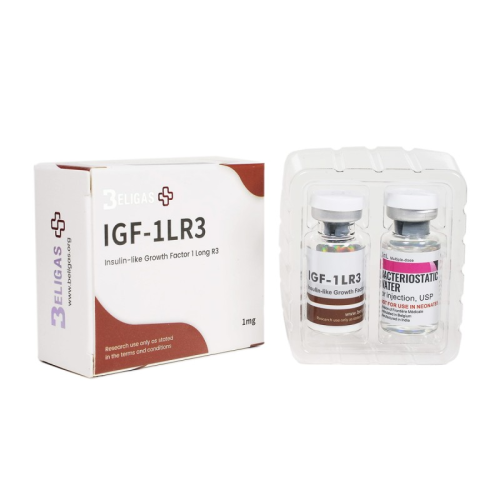CLASSIFICATION
Polypeptide Long-Chain Amino Acid Peptide Hormone
ACNE
No
WATER RETENTION
No
HBR
No
HEPATOTOXICITY
No
AROMATIZATION
No
MANUFACTURER
Beligas
WAREHOUSE
International Warehouse 3
SUBSTANCE
IGF-1 LR3
,
, also referred to as , is a hormone with a molecular structure similar to insulin that is crucial for growth during childhood and exhibits anabolic effects in adults.
Insulin-like Growth Factor 1 (IGF-1)Somatomedin CIGF-1 is one of several growth factors necessary for normal human development. It is primarily produced in the , but it is also synthesized in various other tissues throughout the body.
liverMade up of 70 amino acids, IGF-1 consists of an A and B chain linked by disulfide bonds, with a C peptide region containing 12 amino acids.
Usage
supports the normal growth and development of bones and tissues, and it can lower blood glucose levels. It promotes the reduction of fat cells, leading to an increase in lean body mass and a decrease in fat, effects that are particularly sought after by athletes and bodybuilders. Elevated levels of IGF-1 are associated with weight gain that results from the increase in lean body mass rather than fat accumulation.
Insulin-like Growth Factor-1 (IGF-1)IGF-1 is popular within the bodybuilding community and among regular exercisers, as it aids in recovery time and enhances energy levels during workouts.
IGF-1 injections are commonly prescribed for both adults and children experiencing growth hormone deficiencies. It provides essential amino acids that can benefit children who are not growing at a normal rate and can supplement adults with deficiencies.
Research indicates that the anabolic effects of IGF-1 may be due to its ability to inhibit protein breakdown and stimulate protein synthesis in skeletal muscle, potentially aiding in recovery from skin burns and other tissue irregularities.
Mechanism of Action
IGF-1 is a naturally occurring hormone in human blood, essential for mediating the effects of growth hormone in the body. Its primary functions include promoting tissue and bone growth as a response to growth hormone levels in the bloodstream.
IGF-1 encourages systemic growth and stimulates the growth of nearly all cell types in the body, particularly in bones, cartilage, skeletal muscle, liver, kidneys, nerves, skin, and lungs. In addition to its insulin-like effects, IGF-1 also plays a role in regulating cellular DNA synthesis.
Administration
IGF-1 is typically administered through subcutaneous injection in a fatty area of the body, such as the stomach or abdominal region. It can also be injected intramuscularly.
Method of Administration:Before administering IGF-1, ensure you have a clean and sterile syringe. Follow these steps:
Dosage
Recommended Dosage Amounts for Lean Muscle Growth and Fat Loss:
IGF-1 should not be injected more than twice a day. A typical dosing cycle lasts between 2 and 12 weeks. Children and adults prescribed IGF-1 for developmental deficiencies should consult their healthcare provider for appropriate dosing.
Side Effects
The side effects of IGF-1 can be similar to those of other growth hormones, including excessive body tissue growth (acromegaly) and potential damage to the joints, liver, and heart. Possible side effects include joint pain, muscle aches, headaches, and nausea. IGF-1 can also lower blood glucose levels, leading to hypoglycemia. Research suggests a potential increased risk of certain cancers, such as lung, breast, colorectal, and prostate cancers, associated with IGF-1.

